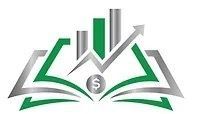Monthly Bookkeeping Reports - Tulsa, OK
5 Bookkeeping Reports to Look at On a Monthly Basis

So, you’ve completed all the monthly reconciliations, now what? Do you sign off until next month or do you dive into what the reconciliations are telling you? The financial information that reconciliations produce gives valuable insight into what happened in the past month and where changes may be needed.
If you are trying to grow your business, bookkeeping reports are indispensable as studies found that companies that take a proactive planning approach to growth see results 30% faster. Even if you aren’t trying to scale your business, bookkeeping reports can help you reduce risk, generate more profit, and maintain compliance with regulatory agencies.
In this article, we will go through the five different bookkeeping reports you should be viewing on a monthly basis
#1: Income Statement
The first report you should be reviewing on a monthly basis is the income statement, which is also called the profit and loss statement. This report outlines how much money you made or lost for a period of time.
The period of time you choose will depend on the insights you are looking to obtain. For example, if you are trying to track monthly sales growth, you would pull the income statement for the past month. On the other hand, tracking year-to-date sales would warrant an income statement from the beginning of the year through the current month-end.
There are a few different categories on the income statement that you will want to analyze, which include:
- Sales – Tracking sales between periods highlights if you are gaining or losing customers and the impact of your pricing.
- Cost of Goods Sold – These are expenses directly related to the sale of your products or service. If your cost of goods sold is increasing more than sales are rising, you are becoming less profitable.
- Gross Profit – This number takes your cost of goods sold minus your sales. A higher number is more favorable.
- Operating Expenses – This category holds all the other expenses related to your business. When looking at the monthly income statement, can you identify areas where you can cut costs next month?
- Net Income or Loss – This is the bottom-line number on the income statement and totals all of the items found on the document. A positive number means you made money while a negative number indicates you spent more than you earned.
Many business owners see success by viewing the income statement on a more frequent basis, such as daily or weekly. Nevertheless, you should be reviewing and tracking this report on a monthly basis at a minimum.
#2: Balance Sheet
he next bookkeeping report that is vital to maintain strong business operations is the balance sheet. This statement outlines the items you own, owe, and have earned. Unlike the income statement that outlines the profitability of your business, the balance sheet tracks financial health. There are three main components to this statement, which include:
- Assets – These are items your business owns, such as cash, accounts receivable, inventory, prepaid expenses, and fixed assets.
- Liabilities – These are items your business owes, including loans payable, accounts payable, wages payable, and other accrued expenses.
- Equity – This category holds everything your business has earned in the past, known as retained earnings. In addition, shareholder contributions and distributions will be found in this category.
At the end of the month, you should analyze your balance sheet for unusual or incorrect items. For example, if you have unreconciled transactions in your bank accounts, the cash account might be negative. This indicates you should look into what is expected to clear. If you find that there are checks over six months old, you may want to reach out to vendors to see if they are expected to be cashed.
The balance sheet also gives you the ability to conduct a thorough analysis of your business health through key performance indicators, known as KPIs. Here are a few KPIs to implement the next time you look at the balance sheet:
- Working Capital – This KPI takes your current assets minus your current liabilities to assess liquidity. Ideally, you want your current assets to exceed your current liabilities at all times, indicating you have enough liquidity to cover upcoming obligations.
- Current Ratio – Similar to working capital, this metric analyzes liquidity by dividing current assets by current liabilities. A ratio between 1.5 to 2 is considered ideal, but this may vary based on your industry.
- Return on Assets – This KPI measures how well your assets are generating a profit by taking net income divided by total assets. A higher percentage is more favorable, indicating that you are efficiently utilizing your assets.
- Debt to Assets – This ratio measures how much you currently owe (debt) to what you own (assets). The percentage calculated can indicate if you have too high of a debt load. It’s important to incorporate this ratio to position your business for future funding.
#3: Gives Access to Industry Experts
One of the most impactful bookkeeping reports is the statement of cash flows. This report tracks where you are spending your cash by reconciling cash from the beginning of the period to the end. This statement can be broken down into three main sections:
- Cash Flows from Operations – These transactions represent items that occur in the ordinary course of business, such as movements in your asset and liability accounts and overall profitability or loss. Depreciation and amortization will also be found in this category.
- Cash Flows from Investing – This account houses investment activities, like gains and losses in investment accounts and purchases of fixed assets.
- Cash Flows from Financing – This category includes all funding the business receives, such as through financial institutions or owner contributions. Owner distributions will also be found here.
The information found on the statement of cash flows allows you to measure your company’s strengths, profitability, and long-term goals. If you have a goal to grow 5% per year, how are you spending your cash to reach those goals? Are you investing in more equipment or seeking outside financing to grow?
You want your cash levels to be increasing. If you find yourself increasing sales, but your cash account remains the same, you may need to evaluate your product costs and where your cash is going to implement actionable change.
Effective cash flow management is a byproduct of reviewing this statement on a regular basis. If your cash is constantly decreasing, maybe you need to draw on a line of credit or look into factoring receivables. Understanding where your business currently stands gives you the insight to make strides toward your goals.
#4: Accounts Receivable Aging Schedule
Another report that is outside of the main three financial statements is the accounts receivable aging schedule. This report outlines who still owes your business money and how long overdue the invoice is.
Viewing this schedule on a monthly basis can guide you on which customers you should reach out to for payment. Sometimes a customer simply forgot to pay the invoice or the check might be lost in the mail. Following up on outstanding invoices promotes effective cash flow management. The accounts receivable aging schedule is also important to uncover any bad debt. If you never review the amounts customers have outstanding, you may allow them to continue to purchase products or services from your business, resulting in a large bad debt write-off.
If you notice amounts greater than 60 or 90 days, you can prevent the customer from purchasing more products until they are caught up on payments. In addition, Generally Accepted Accounting Principles (GAAP) require businesses to write off amounts that aren’t expected to be collected.
Amounts on the accounts receivable aging schedule that you don’t expect to collect should be moved to an allowance account or expensed through the income statement. Without this schedule, it would be difficult to keep your business on track with timely customer payments.
#5: Accounts Payable Aging Schedule
The accounts payable aging schedule should also be viewed on a monthly basis. Contrary to the accounts receivable aging schedule, the accounts payable aging schedule tracks the vendors you owe money to.
Viewing all of your outstanding payments in one report helps you prioritize which vendors you should pay first, especially if cash flow is tight. In addition, if you find that certain payments aren’t due for another 30 days, you can wait a few weeks to make the payments and spend your cash elsewhere.
Frequently reviewing the accounts payable aging schedule helps you build strong relationships with your vendors. Do you think a vendor would be more likely to work with a business that always pays invoices on time or one that is regularly late? Probably the first option.
Prioritizing your vendor relationships with timely payments can lead to favorable order discounts and access to superior service. This makes it important to view the accounts payable aging schedule on a monthly basis.
Summary:
Are you already viewing these bookkeeping reports on a monthly basis? If so, great! Having control over your business finances relies on frequently reviewing important bookkeeping reports.
However, if you are still struggling to complete your bookkeeping timely and derive value from reports, our team at Better Books Online can help. Our services are designed to fit your needs, from back bookkeeping to financial report creation. Reach out to a team member today to learn more.
Sources:
Parsons, Noah. “Do You Need a Business Plan? Scientific Research Says Yes.” Bplans, 2022, https://articles.bplans.com/do-you-need-a-business-plan-scientific-research-says-yes/. Accessed 20 Feb 2023.





